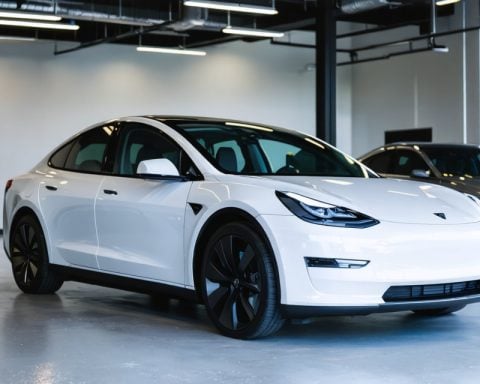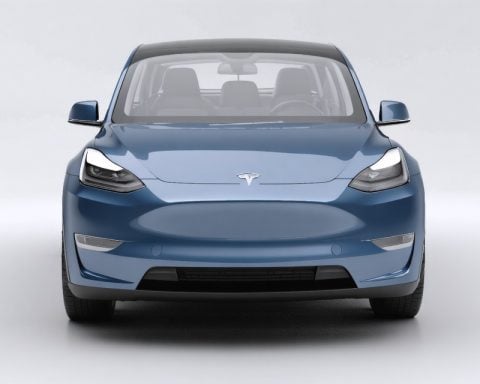- Elon Musk is adept at navigating the intersection of business and politics, influencing sectors like space, automotive, and social media.
- SpaceX could benefit from potential Trump administration support, with key strategic appointments like Jared Isaacman boosting collaboration with NASA.
- Tesla faces uncertainties from potential U.S. policy changes affecting subsidies, impacting its global sales strategy and financial stability.
- X (formerly Twitter) is essential for Trump’s communication strategy, recovering through major advertiser support amidst former financial issues.
- AI ventures like xAI may thrive under favorable tech policies, despite competition, leveraging Musk’s strategic foresight.
- Challenges remain for Starlink, Neuralink, and the Boring Company due to regulatory scrutiny and geopolitical issues.
- The fusion of political and business strategies highlights Musk’s role in shaping futuristic landscapes across industries.
In the bustling corridors of power, a figure looms large—Elon Musk. Known as a maverick genius, Musk masterfully navigates the intricate dance between business and politics. His companies, including SpaceX, Tesla, and X (formerly Twitter), could see new heights if Donald Trump returns to the presidency.
SpaceX, a pivotal player in the space race, already claims a hefty slice of government contracts and stands poised to expand its cosmic reach. As President, Trump’s warm praise and strategic appointments favor Musk’s space ambitions. Notably, potential NASA administrator Jared Isaacman—already a seasoned SpaceX collaborator—could reinforce this alliance, pushing SpaceX beyond terrestrial limits.
For Tesla, the road seems rocky yet full of potential. The electric vehicle giant thrives on global sales, yet Trump’s policy pivots pose a challenge. The changing winds of U.S. subsidies could jar the company’s finely tuned financial gears. Meanwhile, X—Musk’s social media platform—emerges as a crucial channel for Trump’s streamlined government strategies, recovering from prior financial turmoil with the backing of major advertisers like Apple.
However, the synergy extends to artificial intelligence and beyond. Musk’s AI venture, xAI, could flourish under a Trump administration sympathetic to tech advancement. Even amidst competitive rivalry, such as with OpenAI, Musk’s strategic acumen positions him to harness relaxed regulations for breakthroughs.
Yet not all skies are friendly. Embattled Starlink faces geopolitical hurdles, while Neuralink and the Boring Company continue their complex journeys under the scrutinizing eyes of regulators and global critics.
The takeaway? Musk’s intricate ballet of influence and innovation underscores the importance of strategic alignment in politics and business. Whether it is space or cyberspace, his empire’s ability to thrive hinges on leveraging political landscapes, signaling a future where the fusion of public and private sectors charts new frontiers.
Elon Musk: Will a Trump Presidency Propel His Empire to New Heights?
How-To Steps & Life Hacks
– Leveraging Political Landscapes: Business leaders can learn from Musk by adopting a flexible approach to political changes. Stay informed and engaged with policy shifts and maintain strong relationships with key political figures and stakeholders.
– Diversification and Innovation: Musk’s ventures demonstrate the importance of diversification. Explore different sectors and innovate continuously to mitigate risks from political or economic changes.
Real-World Use Cases
1. SpaceX and Government Contracts: SpaceX’s ability to secure government contracts underlies the importance of aligning strategic business goals with national priorities, such as defense, space exploration, and technological advancement.
2. Tesla’s Adaptability: Tesla’s growth in the EV market is a testament to the brand’s capacity to capitalize on global green energy trends and consumer demand, despite potential policy fluctuations.
Market Forecasts & Industry Trends
– Space Industry Growth: According to a report by Morgan Stanley, the space industry could generate over $1 trillion in revenue by 2040, with companies like SpaceX leading the charge.
– EV Market Outlook: The global electric vehicle market is expected to grow at a compound annual growth rate (CAGR) of 22.6% from 2023 to 2030, according to Grand View Research, showcasing opportunities for Tesla.
Reviews & Comparisons
– SpaceX vs. Competitors: While Blue Origin and NASA are formidable rivals, SpaceX’s reusable rocket technology and aggressive launch schedule provide it with a competitive edge.
– Tesla vs. Traditional Automakers: Tesla’s brand loyalty and innovation in battery technology and software updates continue to set it apart from traditional automakers like Ford and General Motors, who are racing to catch up in the EV sector.
Controversies & Limitations
– Regulatory Challenges: Neuralink and The Boring Company often face intense regulatory scrutiny due to the pioneering nature of their projects and their ambitious timelines, which sometimes outpace regulatory frameworks.
– Starlink Geopolitical Risks: Space internet service faces geopolitical hurdles, especially in regions with strict government controls over internet access.
Features, Specs & Pricing
– Tesla’s New Models: Tesla continues to innovate with models like the Cybertruck and updated versions of the Model S and Model X, boasting top-tier autonomous driving technology and superior range.
– SpaceX Falcon Rockets: SpaceX’s Falcon 9 and Falcon Heavy rockets deliver cost-effective, reliable access to space with their reusable design.
Security & Sustainability
– Sustainable Energy Initiatives: Tesla’s focus on solar energy and battery storage underscores its commitment to a sustainable future.
– Cybersecurity in Space: SpaceX prioritizes cybersecurity in its Starlink systems to prevent potential exploitation and ensure data protection.
Insights & Predictions
– AI Landscape: xAI, Musk’s latest venture, could significantly disrupt the AI landscape by fostering innovations in autonomous systems and enhancing AI safety and regulation dialogue.
– Political Impacts: A sympathetic presidential administration could ease regulatory burdens and open new opportunities for Musk’s ventures in the US and abroad.
Tutorials & Compatibility
– Tesla Software Updates: Tesla vehicles regularly receive over-the-air updates, enhancing their self-driving capabilities and adding new features without requiring visits to service centers.
– SpaceX Starlink Setup: Setting up Starlink internet is designed to be straightforward, with user-friendly instructions accompanying the equipment, making high-speed internet accessible in remote areas.
Pros & Cons Overview
Pros:
– Innovative technologies and products
– Strategic positioning in high-growth industries
– Robust brand loyalty and global recognition
Cons:
– Regulatory challenges and geopolitical risks
– High dependency on subsidies and government contracts
– Market volatility inherent in all high-tech ventures
Actionable Recommendations
– Stay Informed: Keep tabs on political and economic changes that might affect tech and energy policies.
– Diversify Investments: Just as Musk has done, diversifying your investments across different industries could shield you from sector-specific downturns.
– Adaptability: Be prepared to pivot strategies based on regulatory changes or technological advancements.
For more insights on innovation in technology and sustainable futures, visit Tesla, SpaceX, and Neuralink.












